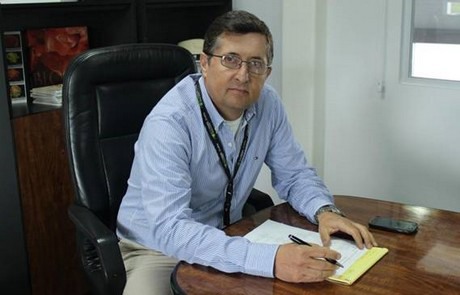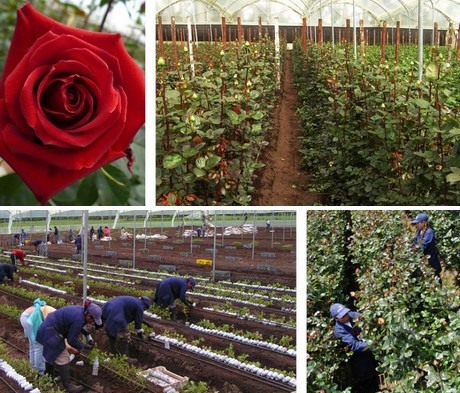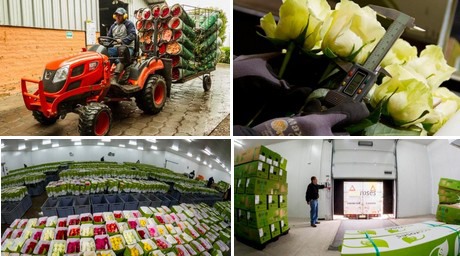
Esteban Chiriboga.
High quality roses
"However, it all starts with the cultivation of high quality roses," says Chiriboga. In their 25ha sized farm, Ecoroses produces 20 million stems a year of around 100 different roses varieties. "For Ecuadorian standards, we are a medium sized farm. We are dedicated solely to the production of Premium Quality Roses," says Chiriboga. The greenhouses, each with a size of approximately 1ha, are equipped with Dutch Irrigation systems. "We use automated irrigation systems which work based on weather conditions, and deliver water and fertilizer through a dripping system which allows for a very efficient use of water." About half of their farm is equipped with a Dutch heating system, "which mainly helps us in disease prevention. Besides that, we also use GPS enabled software for pest and disease monitoring, which allows us to closely track their development and to quickly react and control them," he says.

Post Harvest
After the roses are harvested, they are brought to a 2,000 m2 sized post harvest area where the roses are being classified. "The criteria we use for classifying the roses is based on the integrity and quality of their traits, which include length and thickness of stem, size of the bud, opening or cutting point, color of the flower and health and condition of foliage," says Chiriboga. After the roses are categorized, they will be wrapped inside corrugated cardboard to protect them while the foliage is covered with a plastic sleeve to prevent dehydration and damage during transport. They identify every bunch with a label stating the variety, stem length, date of processing, number of stems per bunch, and the code of the person who prepared the bunch.

Cold Rooms
"After growing, harvesting and classifying this high quality rose, it is crucial that the rose maintains its quality during transportation. This part is as important as the cultivation process," says Chiriboga. When storing and transporting roses, keeping them constantly cool is essential. "Therefore, we dedicate much of our attention to our cooling areas which are equipped with state of the art technologies," he explains. There are two cold areas at Ecoroses; a pre-cool area and a hydration and packing cold-room which encompasses a total size of 4,300 m3 of cold space. "The pre-cool area, removes the outdoor heat from the flower, it also prevents the buds from opening. Then, in the hydration and packing cold-room, the temperature is kept between 0.5° and 2° guaranteeing freshness and quality prior to shipping," explains Chiriboga. Afterwards, the flowers are hydrated for at least 7 hours at temperatures ranging from 0.5° to 2ºC.
All cold rooms at Ecoroses have Aerocide and ethylene removal units that constantly clean the air and remove ethylene. "This prevents premature aging and the development of diseases while still preserving the quality of the flower."
Packaging
The packaging is also carried out at temperatures between 0.5° to 2ºC. "Grouped and labeled boxes remain in this area until they leave in a refrigerated truck for their short journey to Mariscal Sucre Airport in Tababela. The loading process of the boxes from the cold room to the truck also maintains the same temperature range," concludes Chiriboga.
For more information
Ecoroses
Esteban Chiriboga
Email: [email protected]
www.ecoroses.com.ec
